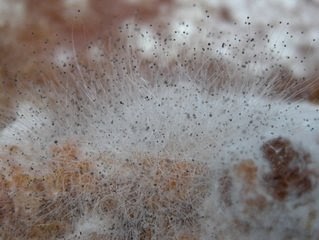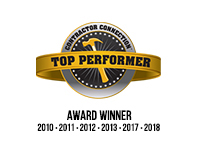Once mold finds its way into your home, it will do everything in its power to become a permanent resident. Just scrubbing off any surface mold you see is usually not enough to prevent an infestation.
At a certain point, the only option is to call in the professionals, so have a keen eye and spot mold at its earliest signs to quell an outbreak before it explodes.
In this article will detail what mold is and how it can harm you and your family. We also remove the mystery of the remediation process, so you know what to expect next time you need help.
Mold Removal vs. Mold Remediation
Mold is made up of microscopic spores that float in the air and start growing on whatever surface they land. It would not be possible to physically remove tens of thousands of spores once they’re in your home, but there are ways to keep those numbers down.
Mold removal usually refers to the process of removing the visible slimy or fuzzy fungus. Scrubbing and sanitizing a water-damaged wall is an example of this. It will stop any colony in its tracks but does not address deep-set issues. This type of removal can be performed with at-home do-it-yourself techniques but might be putting off a larger problem later.
Mold remediation is the process of removing everything it has touched. This can mean throwing out and replacing affected construction materials or applying a strong biocide to kill any traces of this scum. Often the remediation process involves installing a HEPA filtered air circulation system in your HVAC, which is the only way to remove spores from the atmosphere.
If you are serious about keeping this fungus out of your home, remediation is the only reasonable option. It is worth putting in extra time and money today to avoid harming your home and health tomorrow.
Causes of Mold
There is nothing embarrassing about mold. It is not a sign of uncleanliness or lack of attention. All it needs to grow is oxygen, a food source, and the right environment. If you start smelling a musty odor, then it’s time to investigate your home’s dark corners and any hidden spots.
Dark, damp areas are this fungus’s breeding ground. In fact, it only takes 24 hours of exposure to standing water for mildew to start growing.
The main cause of mold is exposure to water. A leaky pipe inside or outside your home can be a perfect environment for a colony to propagate. Even exposure to high humidity over time is a risk factor, so keep a dehumidifier running in those hot summer months. Sinks and washing machines should be monitored for minuscule leaks, as even the smallest drops can start a colony in your kitchen or laundry room.
If you take hot showers, keep the fan on or open a window, as mold loves to grow on ceilings in steamy bathrooms.
Moisture and water are the main causes of mold, so keep track of all at-risk areas within your home.
Common Types of Mold
Mold comes in a whole rainbow of colors; colonies can be pink, white, orange, green, or brown. These varieties are usually a form of aspergillus or cladosporium, which are unsightly but not necessarily harmful.
Unfortunately, the most common variety found within the home is also the most dangerous: stachybotrys, or the dreaded and infamous black mold. Stachybotrys eats anything with a high cellulose content, like wood or drywall. It needs constant moisture and will rapidly expand if not dealt with quickly and totally.
This strain needs to be dealt with immediately, or you could soon be facing the consequences…
Effects of Mold
Mold can tear down both your home and body.
If it is growing on your walls, it literally eats the load-bearing sections of your house. Untreated mold growth threatens the structural integrity of your home and has been linked to collapses.
Mold growth also thrives on a positive feedback loop, for example, mold in your attic can eat through insulation, and a lack of insulation allows more water in, which feeds the mold, and so on. This is an endemic issue that will not resolve on its own.
Along with home damage, it has serious health consequences as well. Some general symptoms include:
- Runny Nose
- Coughing
- Throat Irritation
- Difficulty Breathing
- Sneezing
- Hay Fever
For people with asthma or other pre-existing respiratory conditions, it can be much more harmful. There have been reports of skin irritation, eye irritation, coughing up blood, and sleep apnea. Children are also at a heightened risk, as their immune systems are not fully developed.
If your whole household seems sick, but you all get better when you take a trip away for a few days, this fungus could be lurking in the hidden parts of your home.
Conclusion
Luckily, you don’t have to live with mold. IDC Restoration offers a state-of-the-art mold remediation process. With decades of experience, our experts will put your mind at ease.
We always provide detailed estimates and explanations before moving ahead with any work. Expect transparency and detail-oriented work when you reach out to IDC.
Reach out now online and get a quick estimate, or call us any time at 678-546-0313 (Atlanta), 706-765-8140 (Athens / Northeast Georgia), or 864-841-5300 (Anderson / Greenville, South Carolina).
We look forward to hearing from you and getting your home back to its clean and shining self!













